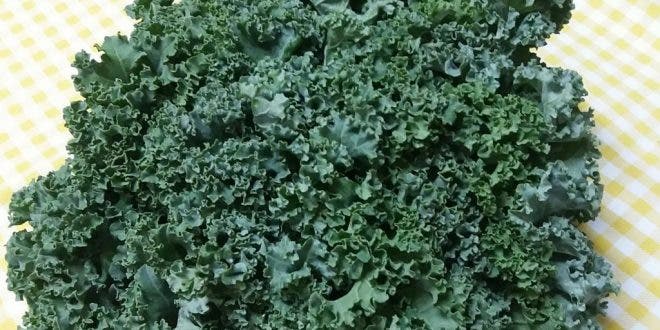Kale is a kale that is gradually being introduced into the diet. Powerful in calcium, iron and vitamins and low in calories, this vegetable is not a fad, it has come to stay.
That is why the nutritionist Laura Arranz has written “Kale, the superfood that can help you improve your diet and health” (Ed.Amat) as a guide to know this vegetable and with guidelines and recipes to incorporate it into the daily menu.
Kale can be eaten raw, in salads, and cooked like any other leafy vegetable, without also ruling out juice mixed with fruits as an option between meals.
Many nutrients and few calories
Kale is a cabbage that has been grown and consumed, especially in northern Europe, although countries like Italy also use a specific variety.
France has gone from using the purple variety as an ornamental plant in planters, to adding it to their dishes.
In Spain, kale has been a practically unknown food, we have always opted for other members of its family such as collard greens or cabbage.
It was not until a few years ago that kale began to be cultivated in Spain, explains Laura Arranz, associate professor in the Department of Nutrition, Food Sciences and Gastronomy at the University of Barcelona.
A 200-gram serving of cooked kale “contains more calcium than a serving of milk, more iron than meat, 3 to 4 times more folic acid than eggs, 4 to 10 times more vitamin C than spinach and almost 3 times more than oranges ”, says the expert.
The composition of kale includes carotenoids, responsible for the colors of fruits and vegetables, precursors of vitamins A, C, K, folic acid, calcium, magnesium, phosphorus, potassium and iron, as well as being a source of vegetable proteins and fiber.
“It is as if it were a nutritional concentrate,” says the doctor in food and nutrition who believes that it can be an important part of the diet, but not replace other foods.
In addition, its nutritional properties make it superior, especially in vegetable protein and fiber, to other vegetables such as spinach that have always had such a good reputation.
“It is a superfood, a term that allows us to explain to the population that there are foods that concentrate a lot of nutrients and very few calories,” says the specialist.
“It is not a food that remains only a fad. It is true that it started as a trend but we already know that it is a trend that is here to stay. The consumer already buys what gives him a health bonus ”, says Laura Arranz.
Kale: How to prepare it?
The kale is not shaped like its first cousins the cabbages. It is elongated and its green leaf is more similar to that of chard or lettuce.
The best thing is to buy it in bunches, with its whole leaves, in the market. Another option is the bags that contain this vegetable already cut.
“But the bag is not the ideal format” because it does not offer the prepared sheet in conditions. Arranz explains that the midrib of the leaf must be removed as it is very thick.
For salads, in addition to removing the nerve, it is necessary to marinate the kale in lemon juice with a little olive oil for half an hour to soften that thick leaf with a somewhat harsh flavor.
If you want to have cooked kale, it is important not to overdo it. The ideal average cooking time is 10 minutes. So we will eat it boiled, like any other vegetable, and seasoned with olive oil and a little salt or sautéed.
One of the tips that Laura Arranz offers us is to consume the kale as soon as we buy it because immediately the leaf dries and it concentrates a bitter taste.
And is that the taste of kale not everyone likes. “It has a particular flavor, as chard or asparagus can also have, it is powerful. But it depends a lot on how you prepare it ”, indicates the nutritionist who assures in her favor that, unlike other cabbages, it does not cause gas or abdominal bloating.
For this reason, Laura Arranz recommends introducing kale one day a week into the diet, looking for recipes that make it attractive (some are already shown in her book), and thus enjoying a food with great nutritional power and low intake. caloric.
Tricolor Whole Wheat Pasta Salad Recipe with Kale
This is one of the recipes that Laura Arranz introduces in her book to encourage us to try kale on our plates.
Ingredients: Kale, tricolor pasta, ½ lemon, extra virgin olive oil, tofu, chia, a pinch of salt and 50 gr. of tofu, which can be exchanged for 30 gr. of parmesan cheese.
While the kale is resting, cook the pasta according to the manufacturer’s instructions.
Dice the tofu or grate the Parmesan cheese.
Mix everything and sprinkle the chia seeds on top.

